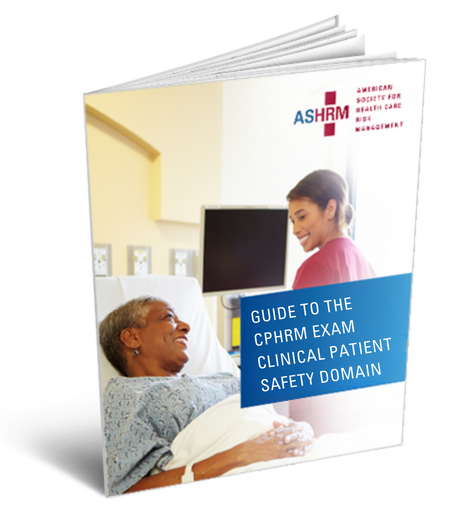
Guide to the CPHRM Exam Clinical Patient Safety Domain
Now Available for ASHRM Members and Nonmembers
The Guide to the CPHRM Exam Clinical Patient Safety Domain provides an outline of the core competencies and learning objectives for clinical patient safety as well as a sample of the type of questions on the CPHRM Exam.
Discover what clinical patient safety areas you need to focus on when preparing for the CPHRM Exam today!
Download Guide to the CPHRM Exam Clinical Patient Safety Domain
Please enter your information below to receive a download link.

What's Inside:
- Introduction
- Exam Specifications and Learning Objectives
- Clinical Patient Safety Practice Questions
- Continued Learning Resources
Related Resources

CPHRM Exam Practice Questions: Clinical Patient Safety Domain
This interactive program features 26 multiple-choice practice questions to assess your knowledge of the six core clinical patient safety competencies in the CPHRM Exam. Each selection includes a rationale and reference materials to guide your studies.
Related Resources
CPHRM Exam Prep
The CPHRM Exam Prep course is designed to help prepare eligible risk professionals to take the exam.
CPHRM Exam Prep
This live virtual course is designed to help Certified Professional in Health Care Risk Management candidates review the materials covered in the…
Book
ASHRM foundational textbook covering the essentials of health care risk management, with chapters on patient safety, risk financing, the legal…
CPHRM Exam Prep
The CPHRM Exam Prep Course is ASHRM's most popular CPHRM study resource. This class is an opportunity to review each of the exam domains and have…
On-Demand Educational Webinars
This webinar discusses the key role risk managers play to prevent opioid-induced respiratory compromise.
On-Demand Educational Webinars
Best practices and a road map for those responsible for patient safety for how to design and implement a procedural sedation risk assessment.
